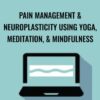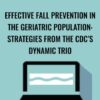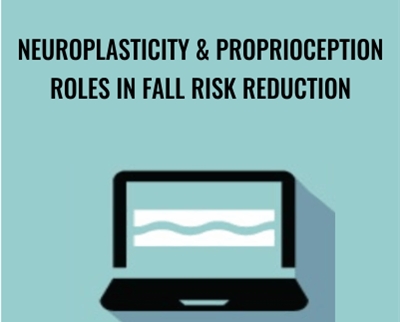$59.99 Original price was: $59.99.$25.00Current price is: $25.00.
2 Hours 01 Minutes
Neuroplasticity and neuroprotection provide us with a brain that can adapt not only to changes inflicted by damage but also to experiences. With this understanding, we can intervene to help with balance, gait and reducing fall risk in our patients.
 Purchase this course you will earn 25 Points worth of $2.50
Purchase this course you will earn 25 Points worth of $2.50Elevate your skills with the Neuroplasticity & Proprioception Roles in Fall Risk Reduction – Michel (Shelly) Denes course, available for just $59.99 Original price was: $59.99.$25.00Current price is: $25.00. on Utralist.com! Browse our curated selection of over 60,000 downloadable digital courses across diverse Uncategorized. Benefit from expert-led, self-paced instruction and save over 80%. Start learning smarter today!
Neuroplasticity and neuroprotection provide us with a brain that can adapt not only to changes inflicted by damage but also to experiences. With this understanding, we can intervene to help with balance, gait and reducing fall risk in our patients. Proprioception is also an integral part of movement, somatosensory input, gait and balance that is impacted by aging and disease as well. We can intervene to help the somatosensory input to ultimately reduce fall risk. Evidence shows that early interventions lead to the best outcomes.
- Analyze the framework for postural control (somatosensory input) and its impact on reducing fall risk.
- Determine the best options to screen, assess and intervene with somatosensory deficits.
- Assess the scientific impact of exercise on neuroplasticity and neuroprotection.
Framework for Posture Control
- Somatosensory input and impact on reducing fall risk
- What is proprioception?
- Light touch and vibration
- Vision and vestibular impacts
Screen, Assess and Intervene
- CDC’s STEADI initiative
- Romberg Test
- Treatments and interventions to improve proprioception
- Case study: significant proprioceptive deficits
Neuroplasticity
- Drivers of neuroplastic changes
- Behavior and its impact on rehab
- 10 principles of neuroplasticity
Science behind Exercise
- Impact on neuroplasticity and neuroprotection
- Evidence based programs
- Appropriate exercise RX for older adults
- Exercise and balance recommendation
Get Neuroplasticity & Proprioception Roles in Fall Risk Reduction – Michel (Shelly) Denes, Only Price $29
Tag: Neuroplasticity & Proprioception Roles in Fall Risk Reduction – Michel (Shelly) Denes Review. Neuroplasticity & Proprioception Roles in Fall Risk Reduction – Michel (Shelly) Denes download. Neuroplasticity & Proprioception Roles in Fall Risk Reduction – Michel (Shelly) Denes discount.
Cultivate continuous growth with the Neuroplasticity & Proprioception Roles in Fall Risk Reduction – Michel (Shelly) Denes course at Utralist.com! Unlock lifetime access to premium digital content, meticulously designed for both career advancement and personal enrichment.
- Lifetime Access: Enjoy limitless access to your purchased courses.
- Exceptional Value: Benefit from savings up to 80% on high-quality courses.
- Secure Transactions: Your payments are always safe and protected.
- Practical Application: Gain real-world skills applicable to your goals.
- Instant Accessibility: Begin your learning journey immediately after buying.
- Device Compatible: Access your courses seamlessly on any device.
Transform your potential with Utralist.com!
Related products
Uncategorized
= 85 Points
= 94 Points
Uncategorized
= 85 Points
Uncategorized
= 85 Points
Uncategorized
= 85 Points
= 72 Points
= 85 Points
Uncategorized
= 35 Points





